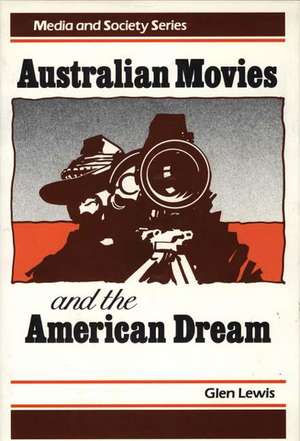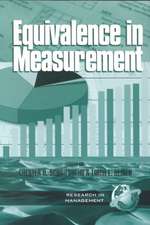Australian Movies and the American Dream: Media and Society Series
Autor Glen Lewis, Glenn Lewisen Limba Engleză Hardback – 31 oct 1987
. . . presents an examination of major movies made in Australia in the late 1970s and early 1980s. The author argues that part of the reason for the success of Australian cinema in recent years may lie with America's identification with a simpler culture, an almost wild west' atmosphere. To explore his thesis the author first offers a short history of the Australian cinema, and then a theory of film as mass communication. "Communication BooknoteS"
Lewis introduces Australian films from the 1920's and 30's and then focuses on thirty films produced between 1975 and 1987. He suggests that part of the reason for Australia's film success may lie in America's identification with a simpler culture and the portrayal of wild west type territory which is often found in Australian films. He also points out that various aspects of American culture have seeped into Australian culture and now appear in their films, making them more appealing to an American audience. He concludes this insightful study with a projection analysis for the future of Australian cinema. With its up-to-date content and analytical approach, this book will be valuable to anyone concerned with mass communication and society, cinema studies, media, or U.S.-Australian relations.
Preț: 437.47 lei
Preț vechi: 707.57 lei
-38% Nou
Puncte Express: 656
Preț estimativ în valută:
83.77€ • 86.32$ • 70.30£
83.77€ • 86.32$ • 70.30£
Carte tipărită la comandă
Livrare economică 21 februarie-07 martie
Preluare comenzi: 021 569.72.76
Specificații
ISBN-13: 9780275926755
ISBN-10: 0275926753
Pagini: 229
Dimensiuni: 156 x 234 x 14 mm
Greutate: 0.5 kg
Editura: Praeger
Seria Media and Society Series
ISBN-10: 0275926753
Pagini: 229
Dimensiuni: 156 x 234 x 14 mm
Greutate: 0.5 kg
Editura: Praeger
Seria Media and Society Series
Descriere
This book is thorough, well organized, and useful. It establishes background on the Australian understanding of the American dream, Austalian photography, image, and subject matter, and American influence on Australian cinema. Brief chapters summarize film theory, applicable mass communication theory, and financial practices of the Australian motion picture industry. Choice
. . . presents an examination of major movies made in Australia in the late 1970s and early 1980s. The author argues that part of the reason for the success of Australian cinema in recent years may lie with America's identification with a simpler culture, an almost `wild west' atmosphere. To explore his thesis the author first offers a short history of the Australian cinema, and then a theory of film as mass communication. Communication BooknoteS≪/i>
Lewis introduces Australian films from the 1920's and 30's and then focuses on thirty films produced between 1975 and 1987. He suggests that part of the reason for Australia's film success may lie in America's identification with a simpler culture and the portrayal of wild west type territory which is often found in Australian films. He also points out that various aspects of American culture have seeped into Australian culture and now appear in their films, making them more appealing to an American audience. He concludes this insightful study with a projection analysis for the future of Australian cinema. With its up-to-date content and analytical approach, this book will be valuable to anyone concerned with mass communication and society, cinema studies, media, or U.S.-Australian relations.
. . . presents an examination of major movies made in Australia in the late 1970s and early 1980s. The author argues that part of the reason for the success of Australian cinema in recent years may lie with America's identification with a simpler culture, an almost `wild west' atmosphere. To explore his thesis the author first offers a short history of the Australian cinema, and then a theory of film as mass communication. Communication BooknoteS≪/i>
Lewis introduces Australian films from the 1920's and 30's and then focuses on thirty films produced between 1975 and 1987. He suggests that part of the reason for Australia's film success may lie in America's identification with a simpler culture and the portrayal of wild west type territory which is often found in Australian films. He also points out that various aspects of American culture have seeped into Australian culture and now appear in their films, making them more appealing to an American audience. He concludes this insightful study with a projection analysis for the future of Australian cinema. With its up-to-date content and analytical approach, this book will be valuable to anyone concerned with mass communication and society, cinema studies, media, or U.S.-Australian relations.
Notă biografică
GLEN LEWIS is Lecturer in the Department of Communication Studies at Canberra College of Advanced Education.















